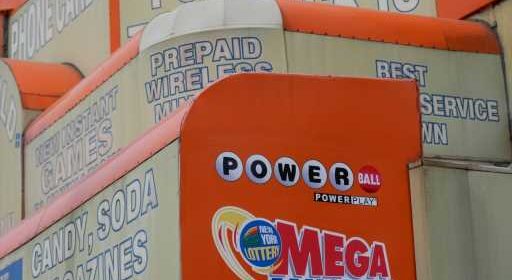Why are there so many big lottery jackpots? – The Denver Post

The current Powerball jackpot has reached an estimated $747 million, and that staggering figure is part of a larger trend.
Billion-dollar lottery jackpots, once rare, are happening more often than ever. Five of the 10 largest lotto jackpots occurred in 2021 and 2022, according to an analysis by The Associated Press. And 2022 alone saw jackpots that topped $1 billion.
Those giant jackpots are no accident. Instead, they’re a product of several factors: changes to lottery gameplay, interest rates and — perhaps surprisingly — a little human psychology.
Reason No. 1: Changes to the formula
In recent years, the two largest lotteries in the United States, Powerball and Mega Millions, have tweaked their formulas to create larger jackpots. Those tweaks also make it harder to win the big prize.
Before we dive in, here’s a quick lesson on Powerball. Players select six numbers. Five of these numbers are between 1 and 69, which are represented by white balls in the drawing and, if chosen, may yield a prize, but not the jackpot. There’s also the “Powerball” number, which is between 1 and 26 and represented by a red ball. If all five of your white-ball numbers are drawn, you win $1 million. If those are drawn — as well as your red Powerball number — you hit the jackpot.
In 2015, Powerball increased its pool of white balls from 59 to 69, while its pool of red balls shrunk from 35 to 26. That change gave individuals a 1-in-25 chance of winning anything — better than the old odds, which were 1-in-32, according to the Washington Post. However, the possibility of anybody winning the jackpot shrunk from about a 1-in-175-million to a 1-in-292-million, according to Lottery.net, which posts winning numbers, statistics and game information.
Every time there’s a Powerball draw and nobody wins the jackpot, the jackpot grows. The harder it is to win, the bigger that jackpot will get. There are Powerball drawings every Monday, Wednesday and Saturday.
Meanwhile, in 2017, Mega Millions raised its ticket price from $1 to $2. A portion of each ticket sale is funneled into the jackpot — so higher ticket prices have led to larger jackpots.
Mega Millions also tweaked its gameplay rules. But first, here’s a quick breakdown of its system. Players select five numbers between 1 and 70, represented by white balls, and one gold “Mega Ball” number between 1 and 25.
Like Powerball, you win $1 million by matching all five white balls. Match the Mega Ball, too, and you win the jackpot. There are prizes for correctly guessing just the Mega number, as well as prizes for guessing some, but not all, of the numbers.
Before 2017, players would pick five numbers between 1 and 75 and one Mega number between 1 and 15. That slight adjustment significantly impacted the game: Individuals went from having roughly a 1-in-259-million chance of winning the jackpot to a 1-in-302-million chance of taking home the top prize, according to a Washington Post analysis. The likelihood of winning a small prize increased, though, according to the Mega Millions website.
Reason No. 2: Rising interest rates
Surprised that interest rates affect the lottery? You’re probably not alone. But interest rates play a significant role in the size of a lottery’s advertised jackpot amount — emphasis on advertised.
Interest rates affect the advertised jackpot amounts because those amounts are actually based on annuities or how much money you’d make from the jackpot over a given period. If you win the lottery, you can receive your winnings in a lump sum or an annuity, consisting of 30 payments over 29 years.
That annuity factors in the interest you’d likely earn on your winnings over those 29 years. So, when interest rates go up, that jackpot goes up, too — even though the actual amount of cash in the jackpot hasn’t changed.
Reason No. 3: Bigger jackpots mean more tickets sold
Finally, there’s a bit of psychology at play. Because those formula changes and interest rates have led to bigger jackpots, more people are buying lottery tickets, says Tim Chartier, a mathematics professor at Davidson College and visiting distinguished professor at the National Museum of Mathematics in New York City.
Chartier says that some people who wouldn’t otherwise play the lottery buy tickets when the jackpot crosses the $1 billion mark. And since the jackpot grows as more people buy tickets, there’s a sort of self-fulfilling loop of increasing ticket sales and jackpots. And the odds of somebody — anybody — winning the jackpot grow as more people play, Chartier says.
Let’s talk about those odds, though. Even when your odds of winning something (if not the jackpot) increase, they’re still overwhelmingly slanted toward you losing. Take, for instance, the 1-in-292-million chance that a player has of winning the Powerball jackpot. Those odds sound staggeringly low — because they are staggeringly low. They’re roughly the same odds you’d have in picking the correct second out of a nine-and-a-half-year timespan, Chartier says.
So, buying 100 lottery tickets might make it feel as if your odds of winning are going up — and they technically are — but it’s still exceedingly, overwhelmingly unlikely that you’ll snag the jackpot.
So, of course, don’t treat the lottery as a financial bet. Instead, if you’re considering playing, think of it as money you’re spending purely for entertainment, Chartier says.
“When you buy a lot more tickets, you’re just going from highly improbable, to highly improbable,” Chartier says. “You should play because it’s fun.”
More From NerdWallet
- Smart Money: ChatGPT vs. the Nerds, and Rental Properties
- Economy Is Improving, but Recession Risk, Inflation Still Hover
- Smart Money: Overcoming Structural Challenges
Cara Smith writes for NerdWallet. Email: [email protected]. Twitter: @https://twitter.com/caramichelles.
Source: Read Full Article
